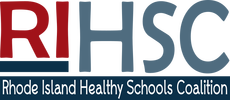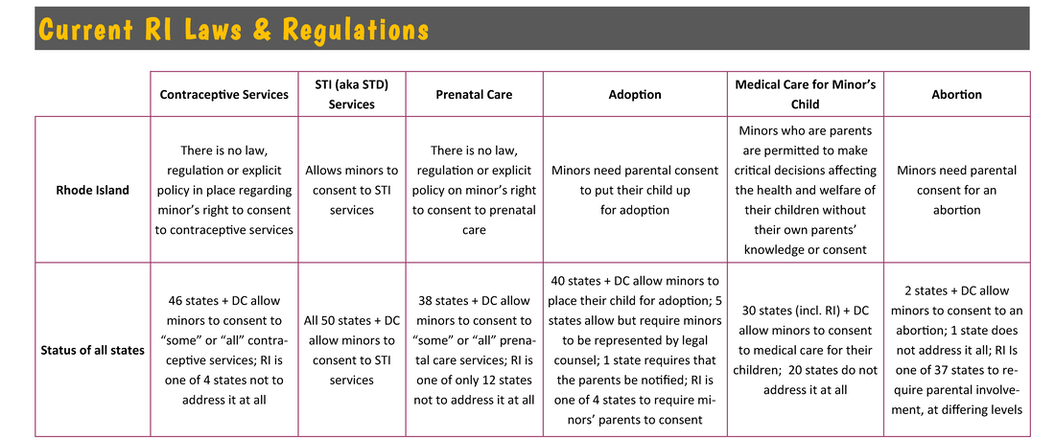adolescent sexual health:
ACCESS TO SEXUAL HEALTH SERVICES

Teens are less likely than younger children and adults to receive recommended preventative health services in general, and often face unique barriers accessing sexual health services in particular. Schools can play an important role in facilitating access to sexual and reproductive health services through the direct provision of onsite care or through referrals to adolescent-friendly, community-based providers. Such facilitation is especially critical for students who might otherwise have difficullty obtaining access to such services.
Aspects of the school infrastructure can support the delivery of sexual health services for youth. School nurses and school-based health centers are integral components to providing care and services, but because of limitations to staffing or to school-building capacity, strong referral systems and established partnerships with community-based health care providers are just as important.
School policies for access to sexual health services, whether provided by a school nurse, a school-based health center or through a system of referrals to local care providers, should spell out how those services are communicated, promoted and connected to the sexual health education and resources for students in the district or school. This helps ensure consistent messaging and helps raise awareness for staff, families and students about the importance of maintaining good health during the adolescent years.
Aspects of the school infrastructure can support the delivery of sexual health services for youth. School nurses and school-based health centers are integral components to providing care and services, but because of limitations to staffing or to school-building capacity, strong referral systems and established partnerships with community-based health care providers are just as important.
School policies for access to sexual health services, whether provided by a school nurse, a school-based health center or through a system of referrals to local care providers, should spell out how those services are communicated, promoted and connected to the sexual health education and resources for students in the district or school. This helps ensure consistent messaging and helps raise awareness for staff, families and students about the importance of maintaining good health during the adolescent years.
General Access to Services Resources
- What Works: Sexual Health Services (Centers for Disease Control & Prevention)
- Best Practices for Youth Friendly Sexual & Reproductive Health Services in Schools (Advocates for Youth)
- American Academy of Pediatrics Information designed for primary care providers to assist and support in the delivery of sexual and reproductive health services to adolescents and young adults. It provides guidance on recommended services, approaches to addressing important clinical issues, and resources for patients and their families on how to optimize the health of adolescents and young adults and reduce risk taking behaviors.
- Sexual Health Services Fact Sheet (CDC)
- How Schools Can Support HIV Testing Among Adolescents Fact Sheet (CDC)
- Adolescent Provider Toolkit - Sexual Health (Adolescent Health Working Group) This toolkit from California-based AHWG embraces adolescent sexuality as a positive and normative stage of development, focusing on healthy sexuality and healthy relationships, designed for primary care providers but applicable to many other providers including school-based and youth program providers.
ASH Referral Systems
- Developing a Referral System for Sexual Health Services (National Coalition of STD Directors)
- Establishing Organizational Partnerships to Increase Student Access to Sexual Health Services (National Coalition of STD Directors)
sexual health access resources:Burrillville: WellOne Primary Medical and Dental Care 401-647-3702
Central Falls: Blackstone Valley Comm. Health Center 401-722-0081 Coventry: Family Health Services 401-828-5335 Cranston: Family Health Services 401-828-5335 East Providence: East Bay Community Action Program 401-848-2160 Johnston: Tri-County Community Action Agency 401-567-0510 Newport: East Bay Community Action Program 401-848-2160 Pawtucket: Blackstone Valley Community Health Center 401-722-0081 |
Providence: Capitol Hill Health Center 401-444-0550
Providence: Central Health Center 401-444-0580 Providence: Olneyville Health Center 401-444-0540 Providence: Planned Parenthood of S. New England 401-421-9620 Providence: Providence Community Health Center 401-444-0400 South Kingstown: Thundermist Health Center 401-783-0523 Warwick: Wilcox Family Health Services 401-732-9090 West Warwick: Thundermist Health Center 401-783-0523 Woonsocket: Thundermist Health Center 401-783-0523 |
Condom Availability Programs (CAPs)
- Condom Availability Programs (CAPs) in Schools: Things to Consider (CDC) The Centers for Disease Control and Prevention (CDC) has identified action steps for schools and districts considering CAPs. These steps can be effective whether your program is for the entire school district or just one school and can be used to start a new program or improve an existing one.
- "To fight sexually transmitted diseases, Montgomery Co. offers condoms in some high school clinics" (2018 Washington Post article)
School-Based Health Centers
- School-Based Health Alliance is the national voice for school-based health care (SBHC) and the home of SBHC professionals and advocates. The SBHC model broadens children’s access to health care and helps them succeed in school.
- School-Based Health Centers (RI Dept. of Health)

